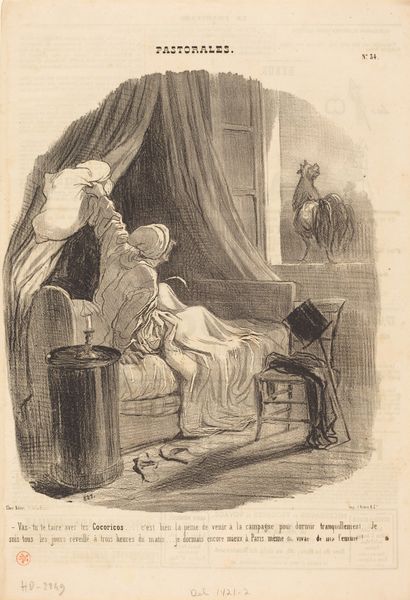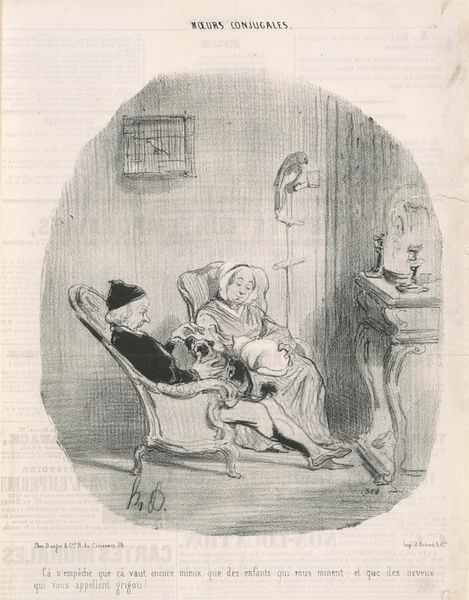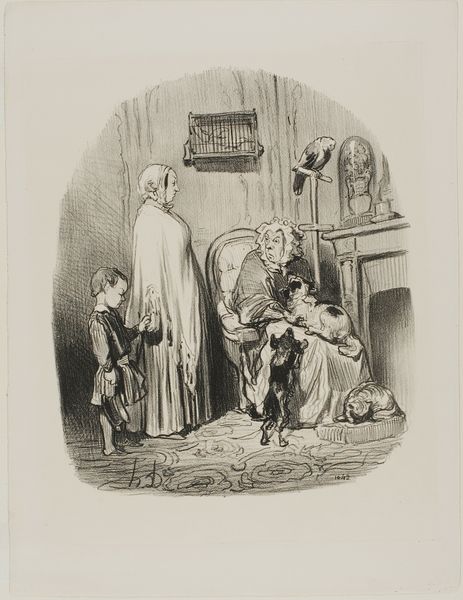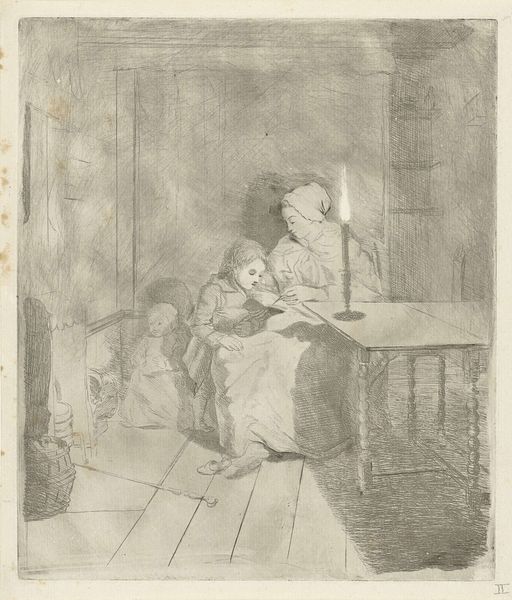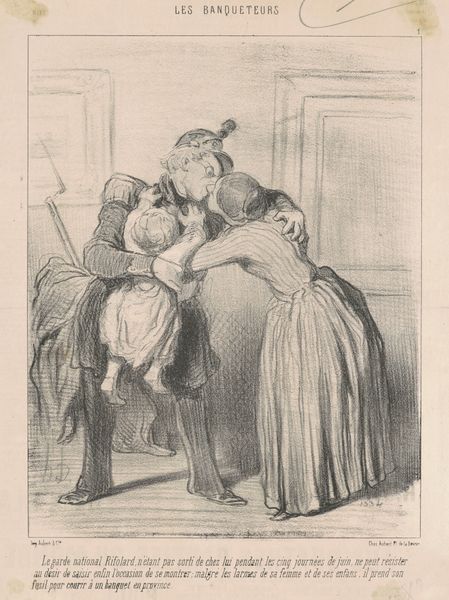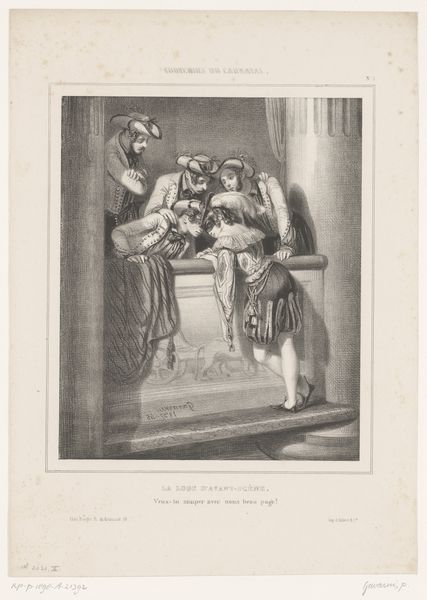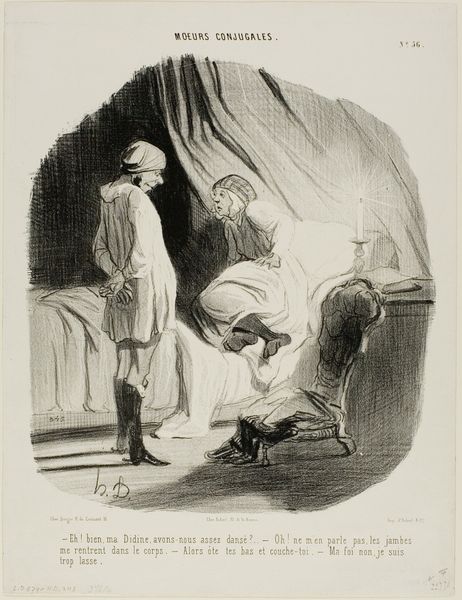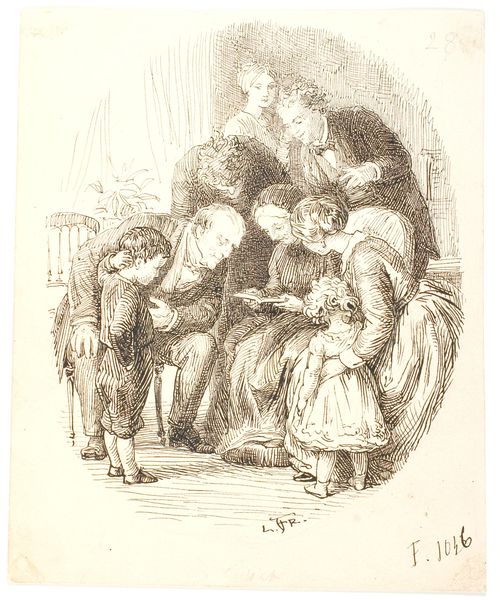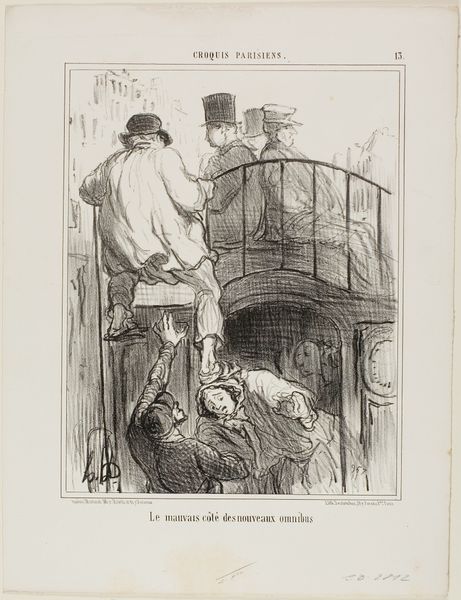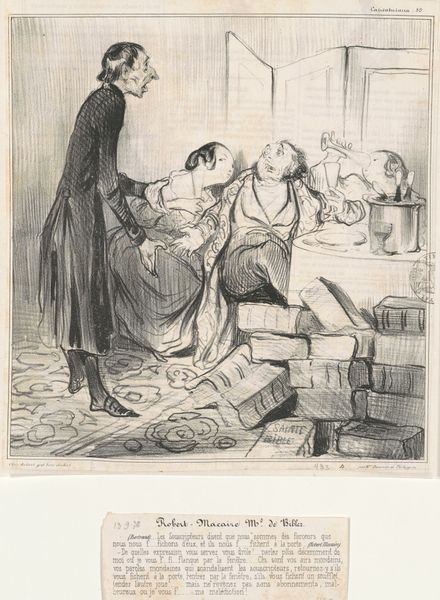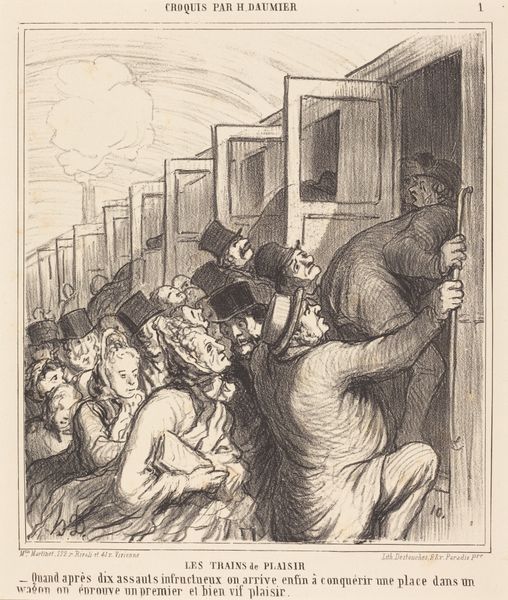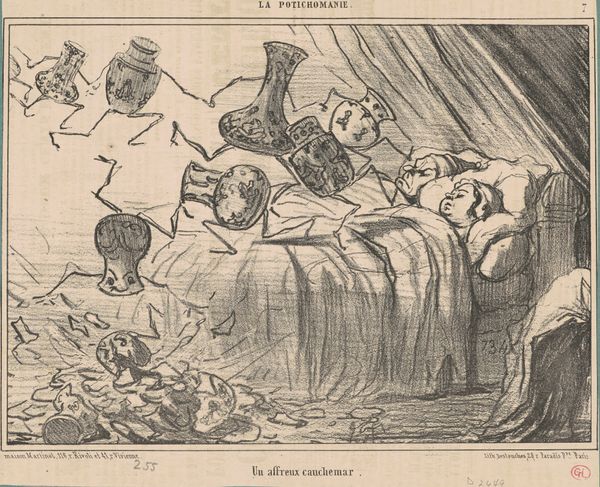
drawing, lithograph, print
#
portrait
#
drawing
#
lithograph
# print
#
caricature
#
romanticism
#
genre-painting
Copyright: National Gallery of Art: CC0 1.0
Editor: This is "Une Nuit au Poste," or "A Night at the Station," a lithograph print by Honoré Daumier, created around the 19th century. The monochromatic palette definitely evokes a somber and weary feeling. What compositional elements strike you most when you look at it? Curator: Immediately, the stark contrasts in shading command attention. The lithographic technique lends itself to these pronounced juxtapositions of light and dark. Consider how Daumier uses cross-hatching to define form and texture, particularly in the figures' clothing and the rough bedding. How does this build a sense of depth? Editor: It makes the scene feel crowded and claustrophobic, almost like you're right there with them. Is there a way to interpret Daumier’s strategic use of diagonals, particularly with the placement of the figures and the bed frame? Curator: The diagonal lines create a dynamic tension, leading the eye across the composition and preventing it from settling. This unease echoes the implied discomfort of the scene, does it not? Furthermore, note the vertical lines of the bare walls – they add a sense of confinement, reinforcing the weariness conveyed through the figures. Editor: It’s interesting how the stark contrast between the darkness and light and the varying line weights creates a hierarchy of focus. What do you think this print is saying from a more material perspective? Curator: Consider the print itself as an object – a mass-produced image intended for widespread circulation. Daumier’s choice of lithography allowed for relatively quick and inexpensive reproduction. How does this factor influence the artist's intention? Editor: It makes you wonder if the artist intended to expose something through its easy circulation, making the viewer part of the conversation. Thanks; I hadn’t considered the role of mass production! Curator: Indeed. Attending to the material conditions and aesthetic properties provides us with unique perspectives into understanding art.
Comments
No comments
Be the first to comment and join the conversation on the ultimate creative platform.

